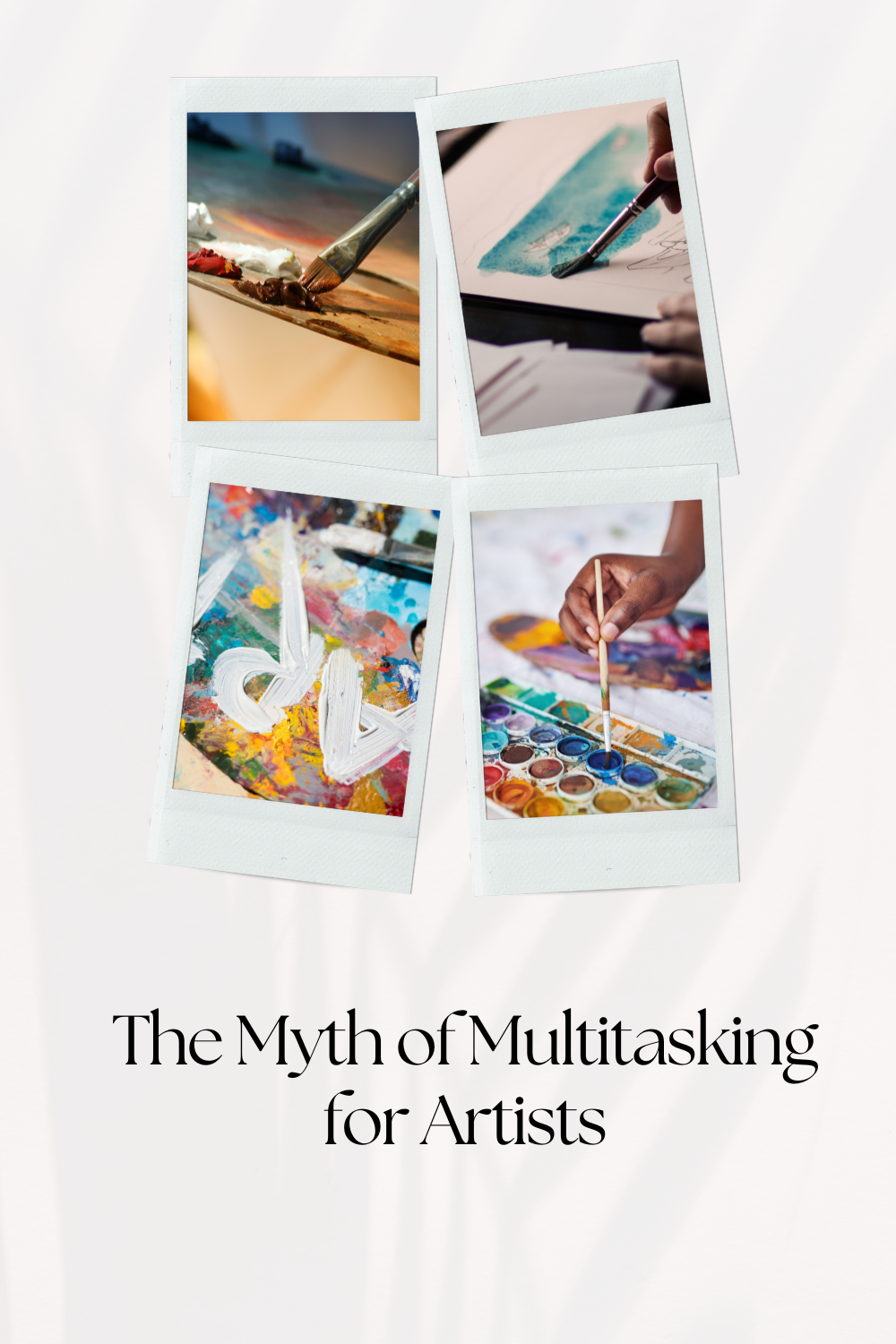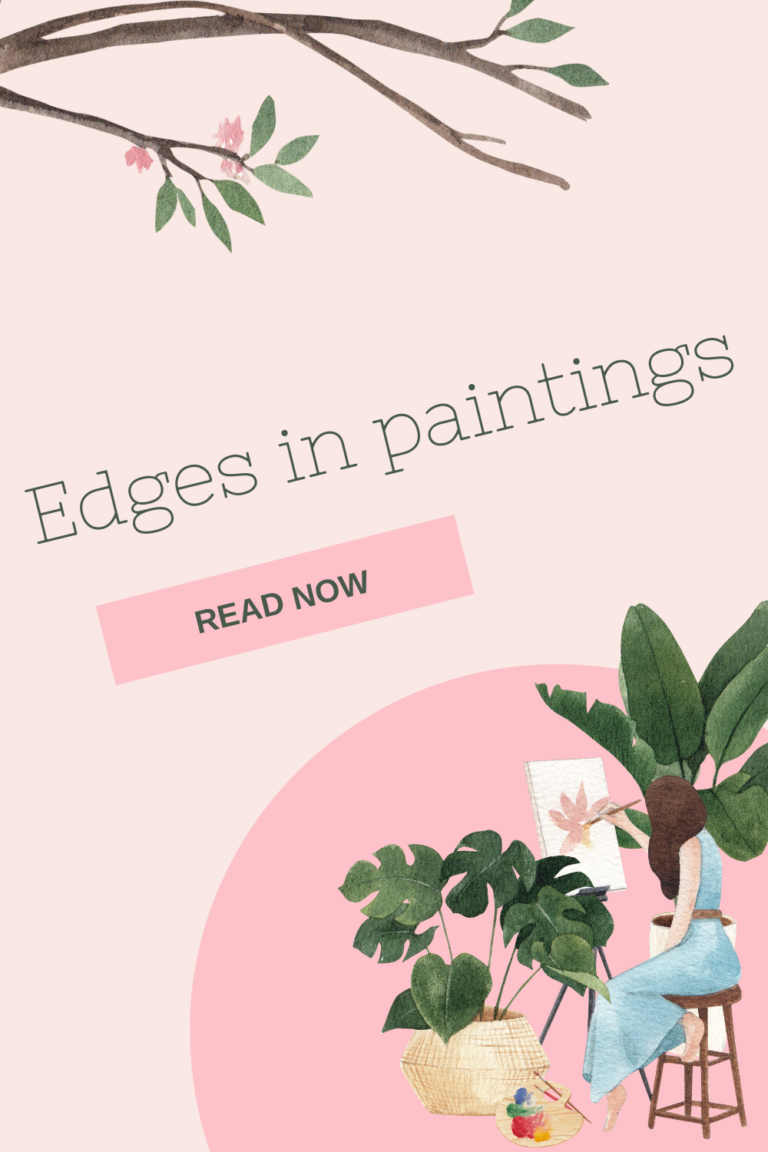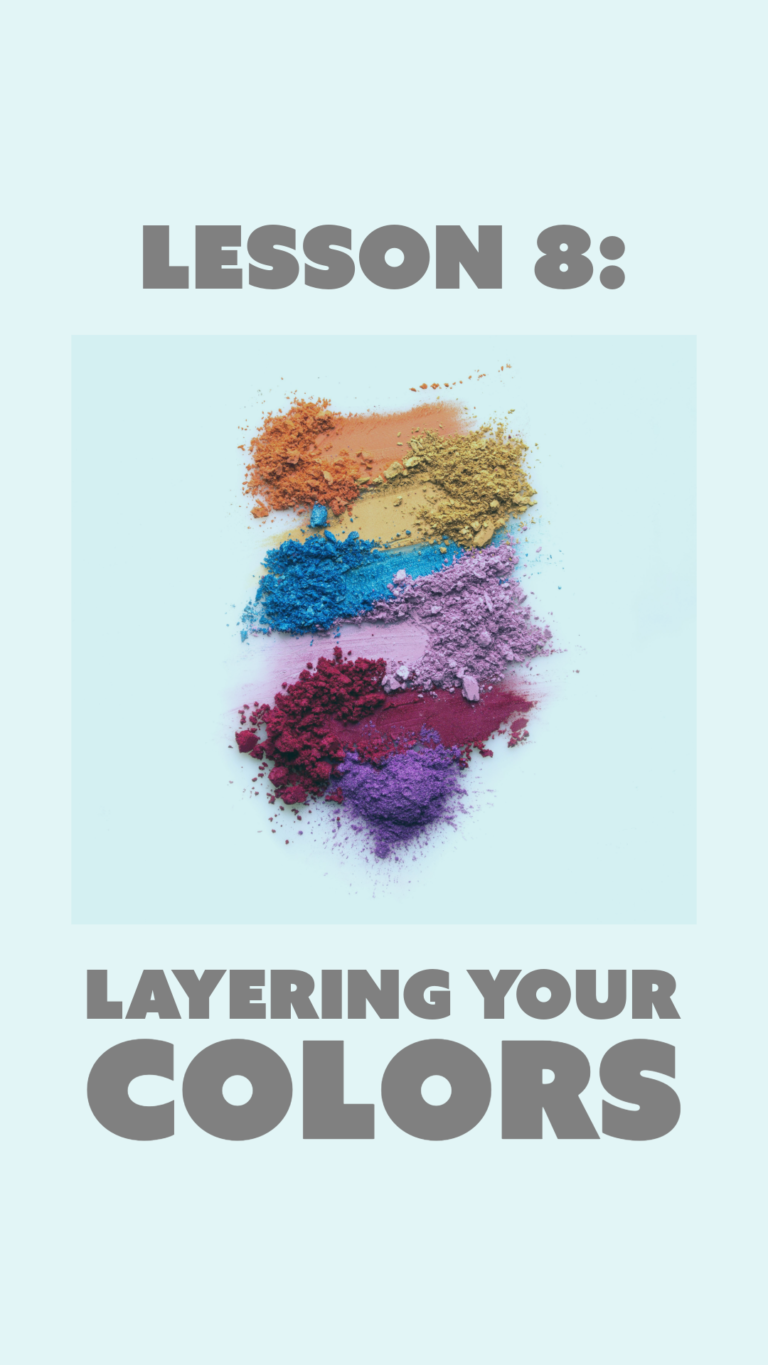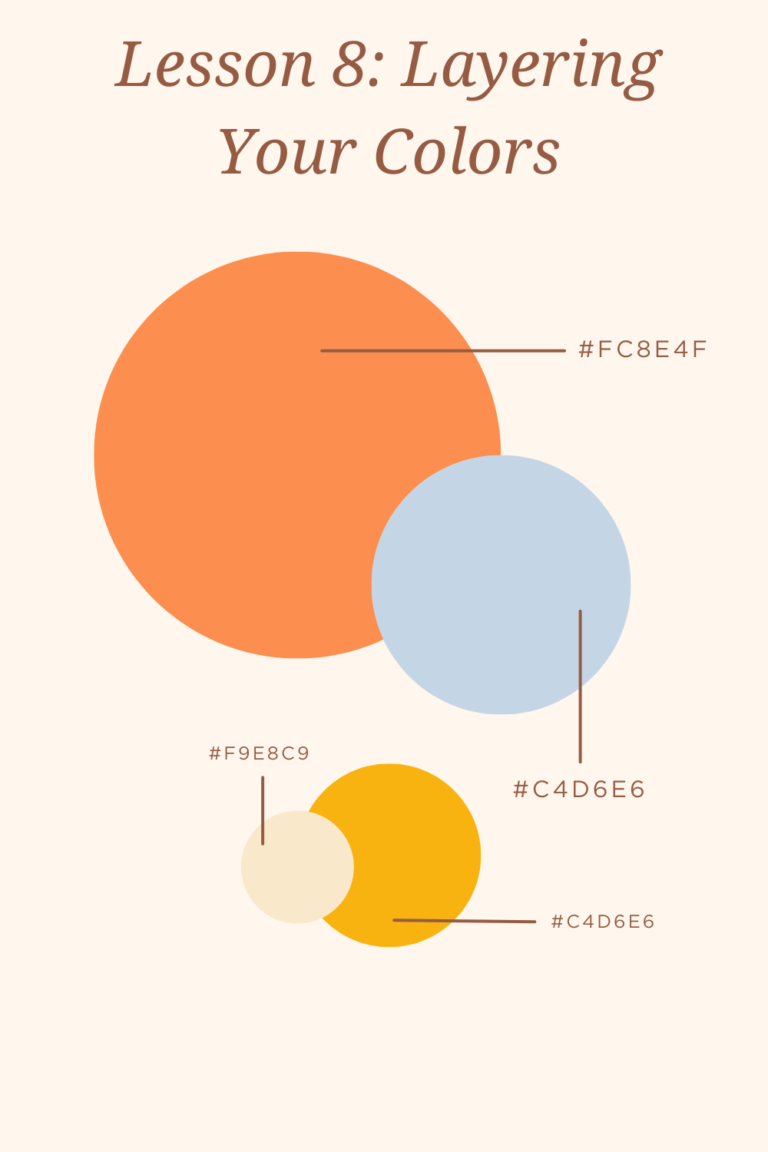Growing up. I’m often told that multitasking is the key to getting everything done.
For artists, juggling our creative projects, marketing efforts, social media, and everyday life can feel like a circus act.
But what if I told you that multitasking is a myth, especially when it comes to creative work?
Research shows that people can lose up to 20% of their productivity when they are interrupted or transition between tasks. This productivity drain can be particularly detrimental for artists, whose work requires deep focus and concentration.
I finished this 36 by 36 inches oil painting in 4 days—each day I spent an uninterrupted 3 hours of studio time. I wouldn’t finish a painting with this size and this degree of details within a week if I multitask or allow myself being interrupted often.
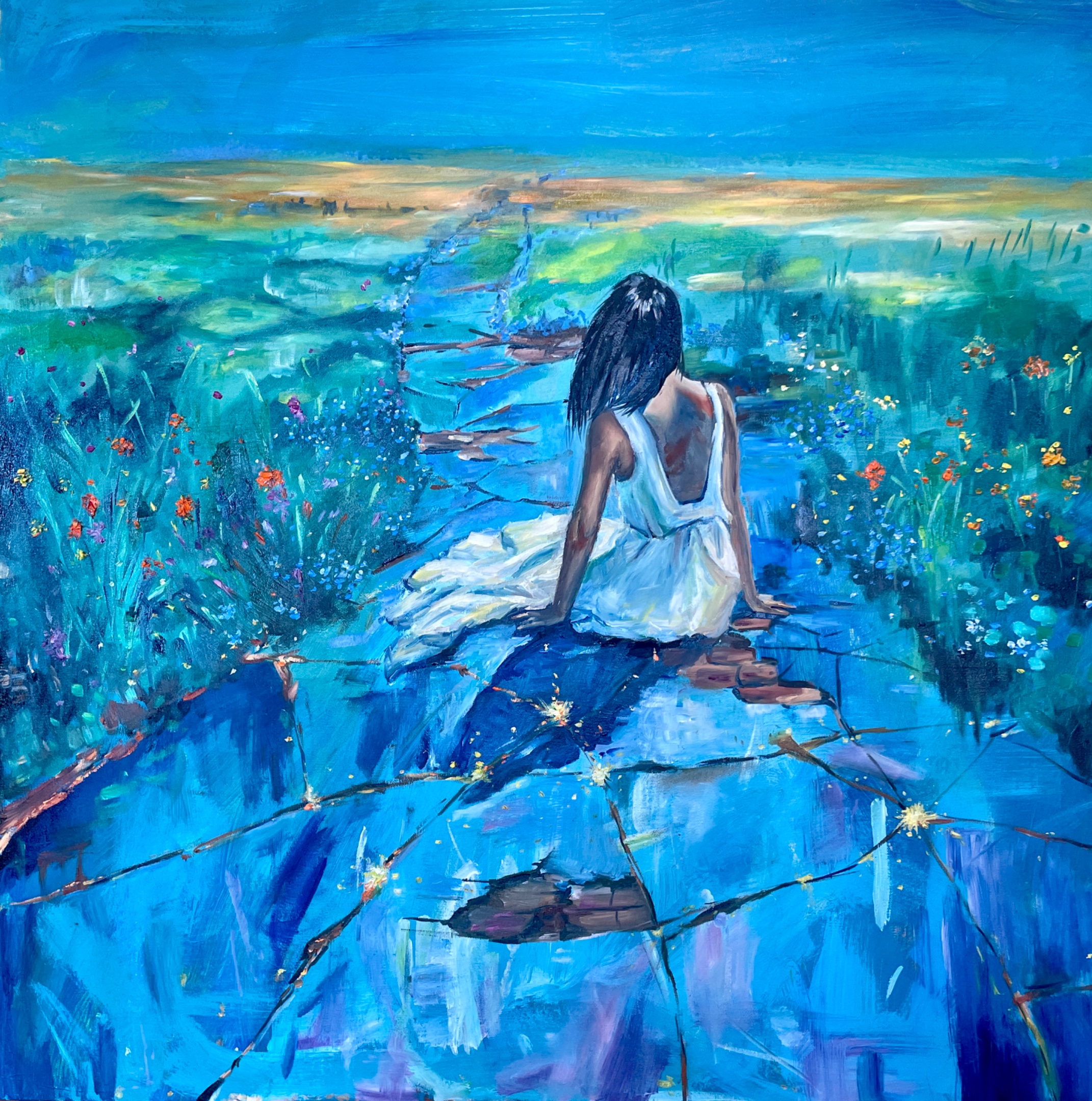
Crystal road, oil on canvas, by Ying McLane
1. The Cost of Task Switching
Every time we switch from one task to another, our brain needs time to adjust. This phenomenon, known as “task-switching,” can disrupt our workflow and diminish our efficiency. For example, imagine you’re in the middle of a painting, fully immersed in the colors and strokes.
Suddenly, you get a notification on your phone or remember that you need to respond to an email. That brief distraction can break your creative flow, making it harder to get back into the zone.
Studies have shown that even a minor interruption can lead to a significant loss in productivity. According to a study conducted by the University of California, Irvine, it can take an average of 23 minutes and 15 seconds to fully regain focus after being interrupted. This means that every time we allow ourselves to be distracted, we are not only losing time but also diminishing the quality of our work.
2. The Myth of Multitasking
The concept of multitasking suggests that we can efficiently perform multiple tasks simultaneously.
However, research indicates that what we’re actually doing is quickly switching between tasks, rather than performing them simultaneously. This rapid switching can cause mental fatigue, reduce cognitive performance, and increase stress levels.
In creative work, this is particularly problematic. The act of creating art requires deep thinking, emotional engagement, and a level of focus that is difficult to achieve when constantly switching tasks. While it might be possible to multitask simple, repetitive tasks like folding laundry, true creative work demands our full attention.
This principle even apply to children. One day this summer my boys suddenly want to do a painting session. They spend the entire morning in my studio drawing their favorite animals and superheroes, without being distracted or interrupted. they finished 6 paintings among them. I was a very proud mom! 🙂
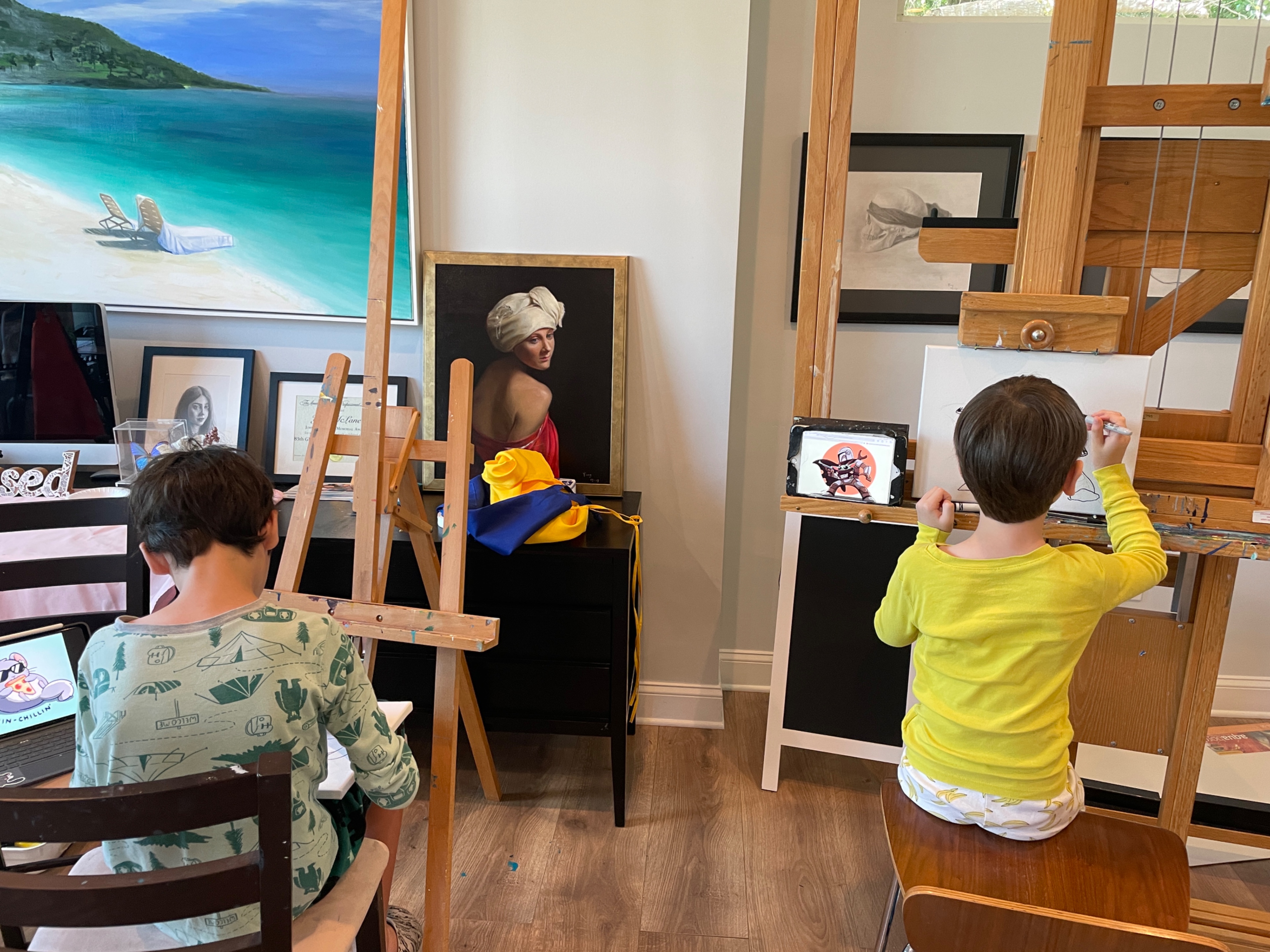
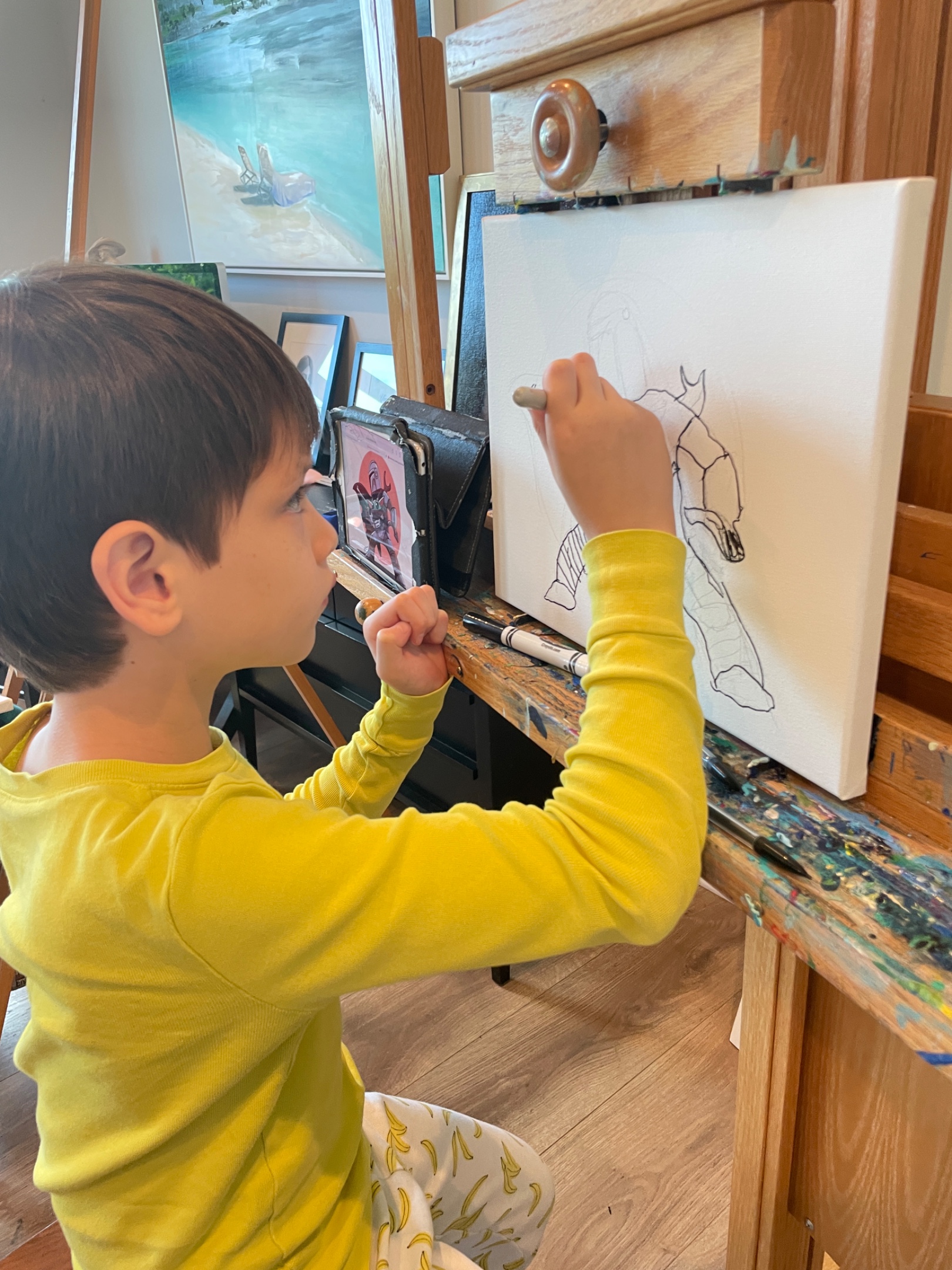
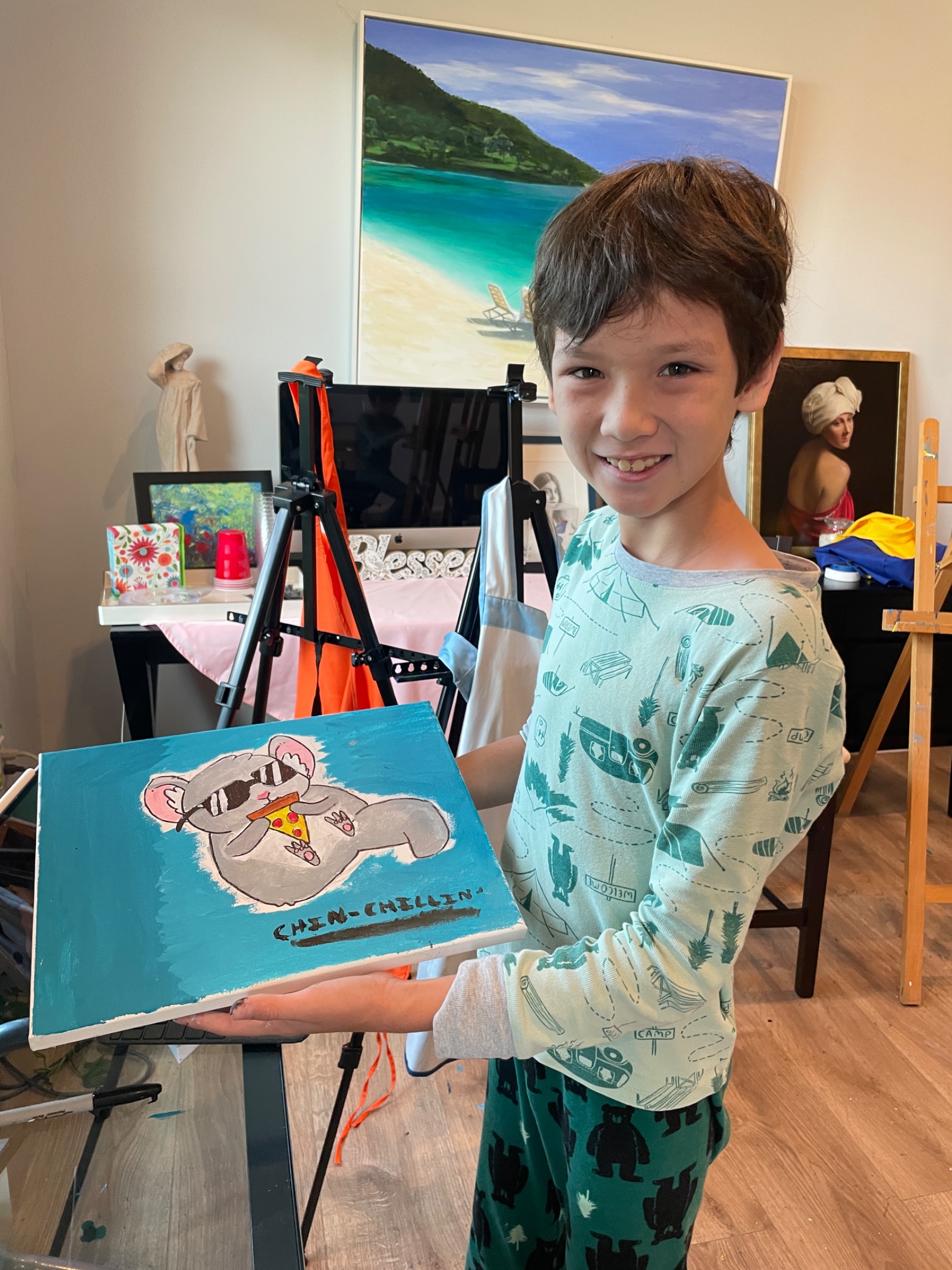
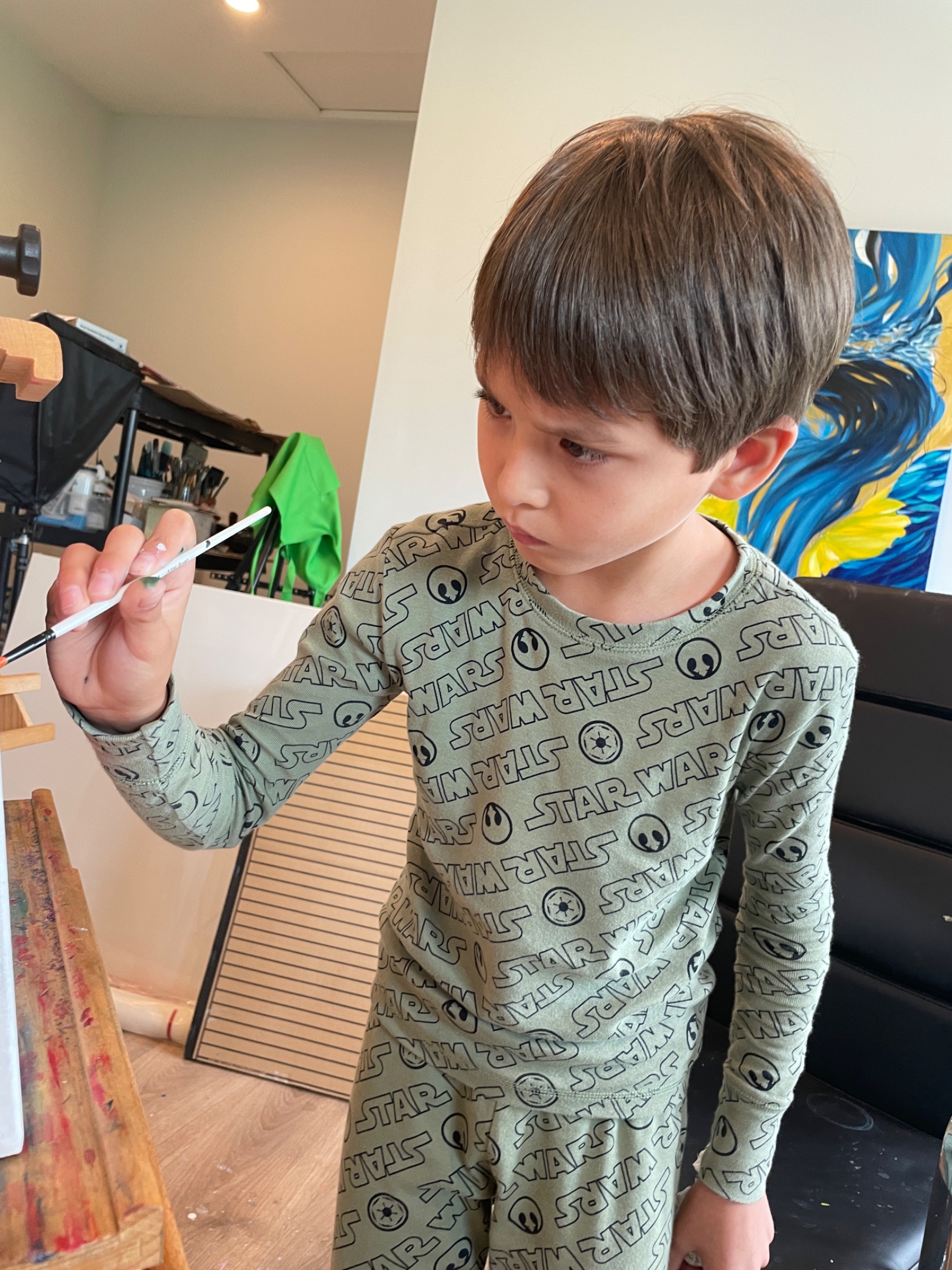
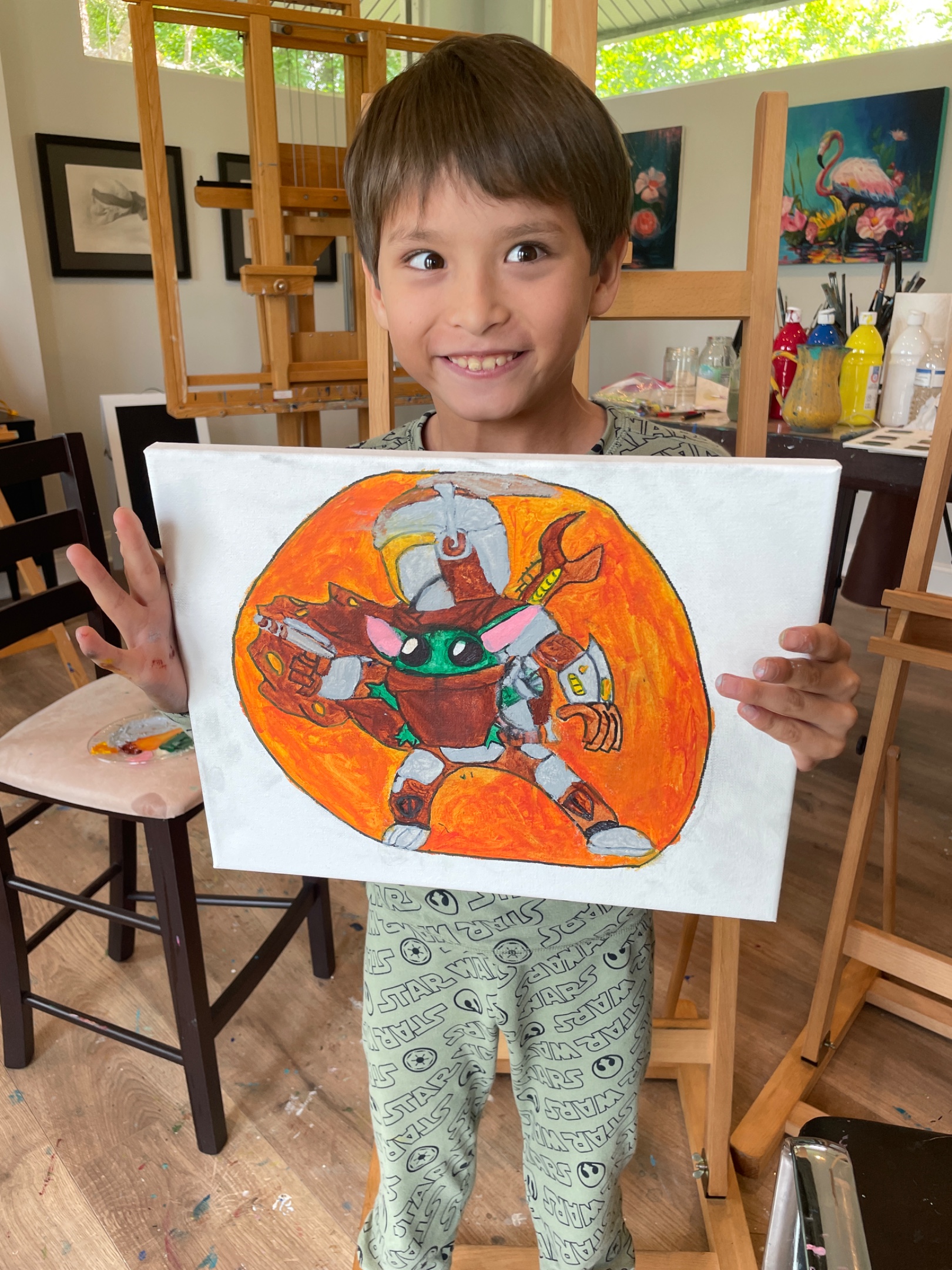
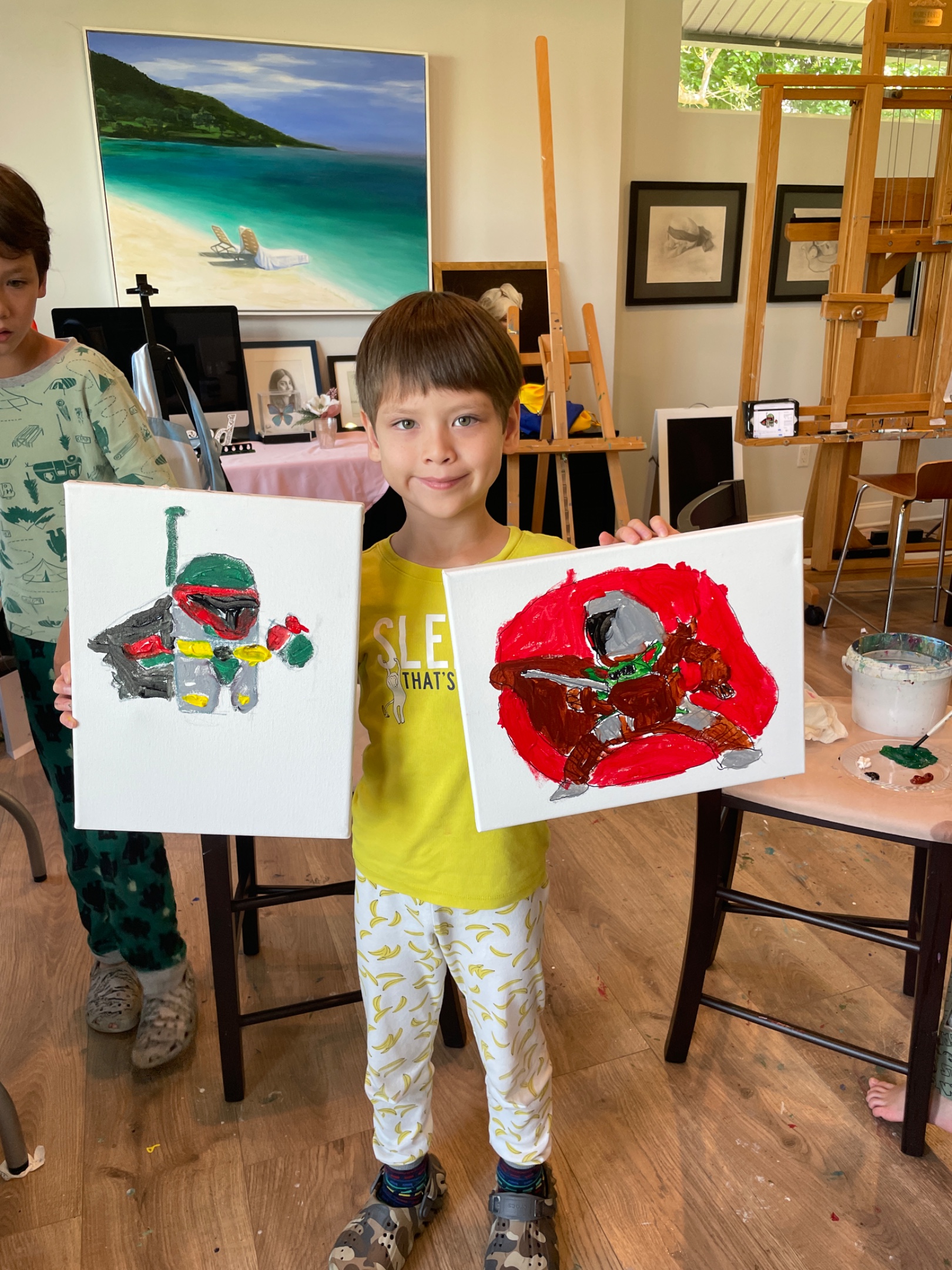
3. The Power of Mono-Tasking
So, what’s the alternative? The answer lies in mono-tasking, or focusing on one task at a time. For artists, this means blocking out dedicated time for creating without interruptions. Here are some strategies to help you embrace mono-tasking:
- Set Clear Boundaries: Establish specific times during the day when you focus solely on your art. Inform those around you of these boundaries to minimize interruptions. Morning is my creative time. Once I focus on the painting in the front of me, two or three hours will go by without I notice it. Your creative time maybe nighttime if you are a night owl, or in the afternoon. The key is blocking a solid two to four hours of time to create!
- Create a Distraction-Free Environment: Designate a space for your creative work where distractions are minimized. Turn off notifications on your phone and computer, close unnecessary tabs on your computer, and create a calming atmosphere that helps you focus.
- Prioritize Your Tasks: Determine which tasks require your full creative energy and focus. Schedule these tasks during your peak productivity hours and save less demanding tasks, like administrative work, for later. I always leave these smaller, less intense tasks in the later of the day. This way, even I am being interrupted by family activities, I can go back to it without much difficulty.
- Practice Mindfulness: Cultivate a mindful approach to your work by being present in the moment. Pay attention to your creative process, and allow yourself to fully engage with the task at hand.
- Take Breaks: While mono-tasking is about focusing on one task, it’s also important to take regular breaks. This helps prevent burnout and keeps your mind fresh and creative. The average rule of thumb is take a 5 minute break every 45 for minutes of work. And take a longer break like 20 to 30 minute after three hours.
- Give yourself a small reward often. Like a little snack, a walk around block, or read a chapter of my favorite book are some of my favorite rewards. Doing creative task is mentally and physically draining, and this is a strategy to motivate and fuel your creative tank.
As artists, our creative energy is precious.
Remember, it’s not about doing more in less time, but about doing the right things with full attention and intention.
So, let’s turn off the distractions, embrace the beauty of mono-tasking, and give our art the undivided attention it deserves.
Does this post help you in someways? Leave a comment or share with a friend!

